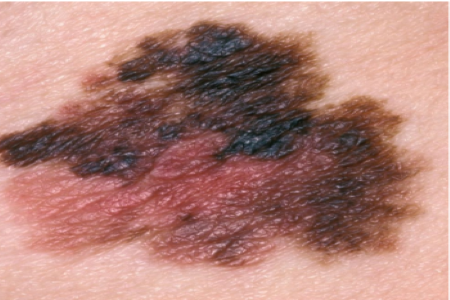Castle’s DecisionDx-Melanoma and DecisionDx-SCC tests can guide risk-aligned treatment decisions, including sentinel lymph node biopsy (SLNB) for patients with melanoma and surveillance imaging for those with cutaneous squamous cell carcinoma (cSCC), according to data presented in two video abstracts at the 2024 American Society for Dermatologic Surgery (ASDS) Annual Meeting in Orlando, FL.
DecisionDx-Melanoma is a gene expression profile risk stratification test. DecisionDx-SCC is a 40-gene expression profile test that uses an individual patient’s tumor biology to stratify risk of metastasis in patients with cSCC who have one or more NCCN high-risk factors.
DecisionDx-Melanoma can guide SLNB decisions in patients with T1 melanoma tumors
The National Comprehensive Cancer Network (NCCN) guidelines regarding SLNB are most ambiguous for melanoma patients with T1a tumors with high-risk features and T1b tumors, for whom SLNB may be considered due to an increased risk of metastasis. Data from the ongoing prospective, multicenter study (CONNECTION) confirm that DecisionDx-Melanoma can identify patients with T1 tumors with a low risk of sentinel lymph node positivity who can safely forgo SLNB (negative predictive value of 98.4%), while maintaining very high survival rates in low-risk patients who did not have an SLNB (three-year recurrence free survival rate of 99.5%).
Additionally, the data indicate that using DecisionDx-Melanoma test results to guide SLNB decisions in patients with T1 tumors could have reduced the number of unnecessary biopsies by up to 64%, as well as procedure-related complications and health care costs.
DecisionDx-SCC can guide radiologic surveillance decisions in patients with stage T2b cSCC
Radiologic surveillance imaging in patients with high-risk SCC can identify disease recurrence earlier, which may improve patient outcomes. Researchers evaluated the utility of the DecisionDx-SCC test in guiding these decisions in patients with higher stage disease (i.e., patients with Brigham and Women’s Hospital (BWH) T2b SCC tumors), whom studies have shown are at a higher likelihood of nodal or distant metastasis relative to lower-staged patients. They found that approximately 42% of the patients with T2b tumors who received radiologic surveillance imaging received a Class 1 (low risk) test result and had a metastasis rate of 5.9%, indicating that clinicians could have safely deferred surveillance imaging for these Class 1 patients due to the low metastatic rate. For patients who were not imaged, almost 50% received a Class 2A or 2B (higher or highest risk) test result and had an 18.8% metastasis rate, suggesting that these patients may have benefitted from imaging to promote early detection of disease progression and improved outcomes. Overall, these data demonstrate the utility of DecisionDx-SCC to help improve selection of BWH T2b patients for radiologic surveillance imaging based on their biological risk of metastasis, as provided by the test.
“While staging is an important part of skin cancer risk assessment, well-validated molecular tests like DecisionDx-Melanoma and DecisionDx-SCC are designed to look deeper into the biology of a patient’s tumor to provide additional insight into its likely behavior,” says Etan Marks, DO, pathologist, laboratory director and primary investigator at Advanced Dermatology and Cosmetic Surgery in Delray Beach, FL. “As demonstrated in the studies at ASDS, these insights can enhance clinical decision-making and arm clinicians with more precise risk information to help route patients to the most appropriate modality aligned to their risk of metastasis and survival.”


